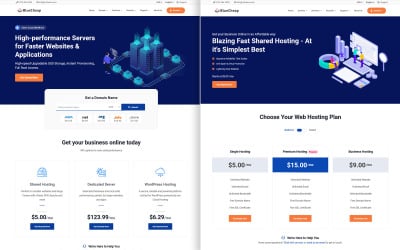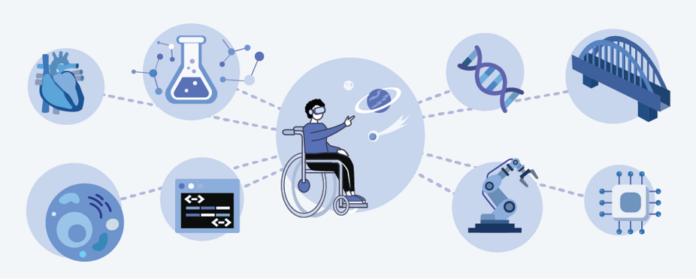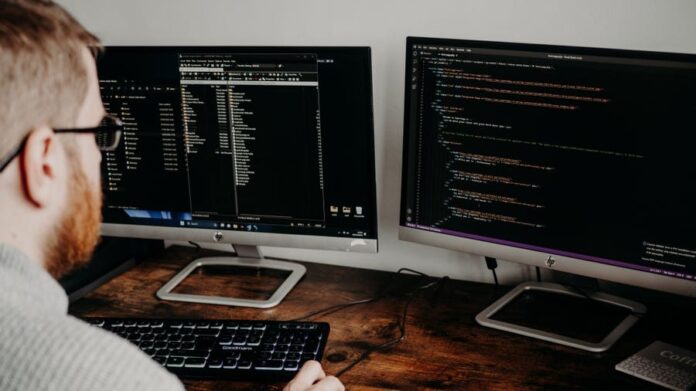Introduction
The COVID-19 pandemic has drastically changed the landscape of education, forcing schools and universities to shift from traditional classroom learning to remote learning. This sudden shift has highlighted the importance and potential of online education and digital tools in providing access to quality education. As we navigate through these unprecedented times, it is important to analyze and understand the benefits, challenges, and future trends of remote learning.
In this blog post, we will delve into the future of remote learning and its impact on the education sector. We will explore the benefits and challenges of remote learning, the role of technology in enhancing the learning experience, and the future trends that will shape the way we learn remotely. Let us dive in and discover the endless possibilities of online education and digital tools in revolutionizing the way we learn.
Benefits of Remote Learning

Remote learning, also known as online or virtual learning, refers to any form of education that takes place outside of a traditional classroom setting. It allows students to access course materials and interact with instructors and classmates through digital platforms, such as video conferencing, online learning management systems, and educational apps.
Flexibility and Accessibility
One of the major benefits of remote learning is its flexibility and accessibility. Students are not bound by time or location, allowing them to study at their own pace and from the comfort of their homes. This eliminates the need for commuting and provides an opportunity for students who may not have access to traditional education due to geographical or financial constraints.
With remote learning, students can access course materials anytime and anywhere, making it easier for them to balance other commitments, such as work or family responsibilities. This flexibility is especially beneficial for adult learners who may be juggling multiple priorities.
Personalized Learning Experience
Every student has unique learning needs and styles. Traditional classroom settings often do not cater to individual needs, as teachers are required to follow a standardized curriculum and teach to a large group of students. Remote learning, on the other hand, allows for a more personalized learning experience.
With online education, students can access a variety of resources and choose the ones that best suit their learning style. They can also communicate with instructors on a one-on-one basis and receive personalized feedback and guidance. This personalized approach to learning can result in better engagement and understanding of course material.
Diverse Learning Opportunities
Remote learning has opened up a world of diverse learning opportunities for students. With the use of digital tools, students can access courses and programs from universities and institutions all over the world. This allows them to broaden their knowledge and gain exposure to different cultures and perspectives.
Moreover, remote learning has also made it easier for students to pursue their interests and passions outside of traditional academic subjects. They can enroll in online courses or workshops on topics like art, music, coding, or cooking, which may not be available in their local schools. This not only enhances their learning experience but also encourages lifelong learning.
Challenges of Remote Learning

While there are numerous benefits of remote learning, it also comes with its own set of challenges. As we navigate through this new way of learning, it is important to address these challenges and find ways to overcome them.
Technological Barriers
One of the biggest challenges of remote learning is the technological barrier. Not all students have access to high-speed internet or devices such as laptops or tablets. This makes it difficult for them to participate in online classes or access course materials. In some cases, students may also face technical difficulties or internet connectivity issues, which can hinder their learning experience.
To address this challenge, schools and institutions can provide students with necessary equipment and offer support for technical issues. Governments can also invest in improving internet infrastructure in underserved areas to ensure equal access to online education.
Lack of Social Interaction
Traditional classroom settings provide students with opportunities for face-to-face interaction with peers and teachers. This social interaction is essential for the overall development of a student and cannot be fully replicated in remote learning.
Virtual classrooms may also feel isolating for some students, especially those who are used to a more collaborative learning environment. Lack of social interaction can lead to feelings of loneliness or disengagement from the learning process. To combat this, online education platforms can facilitate virtual group projects or discussions to promote social interaction among students.
Self-Motivation and Time Management
Remote learning requires students to be self-motivated and have good time management skills. Without a teacher physically present in the classroom, students need to take responsibility for their own learning and stay on top of their coursework. This can be challenging for some students, especially those who struggle with self-discipline.
To help students develop these skills, instructors can provide clear guidelines and deadlines for assignments and actively engage with students to keep them motivated. Schools and institutions can also offer workshops or resources on time management and self-motivation to support students in their learning journey.
Technology’s Role in Remote Learning
Technology has played a crucial role in enabling remote learning during the pandemic. Without it, transitioning to online education would not have been possible on such a large scale. Let us explore how different digital tools have enhanced the learning experience for students and teachers alike.
Video Conferencing Tools
Video conferencing tools, such as Zoom, Google Meet, and Microsoft Teams, have become the primary mode of instruction for remote learning. These platforms allow students and teachers to interact in real-time through video and audio calls, making it feel like a traditional classroom setting.
Apart from live classes, video conferencing tools also offer features like screen sharing, breakout rooms, and recording capabilities, which enhance the overall learning experience. Students can share their screens for presentations or group work, while teachers can use breakout rooms for smaller group discussions. The ability to record sessions also allows students to re-watch classes at their convenience and refer to them while studying.
Online Learning Management Systems
Online learning management systems (LMS), such as Blackboard, Canvas, and Moodle, provide a centralized platform for students and teachers to access course materials, submit assignments, and communicate with each other. These platforms also offer features like discussion boards, online quizzes, and grading systems, making it easier for instructors to track student progress and provide feedback.
Moreover, LMSs also allow for the integration of third-party tools, such as educational apps or virtual labs, which can enhance the learning experience for students. These systems also have mobile applications, making it convenient for students to access course materials on-the-go.
Educational Apps and Gamification
The use of educational apps and gamification has revolutionized the way students learn remotely. Educational apps, such as Duolingo, Khan Academy, and Quizlet, offer interactive and engaging ways for students to learn and practice various subjects. These apps often use game-like elements, such as points, badges, and levels, to motivate students and make learning more fun.
Gamification has also been incorporated into traditional courses, where teachers use game-based techniques to reinforce learning and increase student engagement. For example, teachers may use a Jeopardy-style game to review course material or create a scavenger hunt to teach research skills.
Future Trends in Remote Learning
As remote learning becomes more prevalent, we can expect to see some exciting trends that will shape the future of education. Let us explore some of these trends and anticipate the impact they will have on the way we learn.
Artificial Intelligence (AI)
Artificial intelligence (AI) has already made its way into education, with the use of chatbots for student assistance and AI-powered grading systems. In the future, we can expect to see AI being used to personalize the learning experience even further. AI algorithms can analyze data on student learning patterns and provide customized recommendations for course materials or study methods.
Moreover, AI can also assist in creating digital content, such as videos or quizzes, tailored to individual student needs. This will not only save time for instructors but also provide a more interactive and engaging learning experience for students.
Virtual and Augmented Reality
Virtual and augmented reality have the potential to revolutionize the way we learn by providing immersive experiences. With VR and AR technologies, students can visit different countries, explore historical sites, or conduct virtual experiments, all from the comfort of their homes.
These technologies can also be used to create simulations of real-world scenarios, allowing students to gain practical skills and experience without physical constraints. For example, medical students can practice surgeries using virtual reality or construction students can simulate building structures using augmented reality.
Microlearning and Personalized Learning Paths
Microlearning, or bite-sized learning, refers to short lessons delivered through digital platforms. These lessons are usually no longer than 10 minutes and focus on one specific topic or concept. Microlearning is gaining popularity in the corporate world and is expected to make its way into education as well.
With microlearning, students can access short lessons on-demand, making it easier for them to fit learning into their busy schedules. Moreover, personalized learning paths can be created using microlearning, where students can choose the topics they need to focus on and skip those they already understand.
Conclusion
The future of remote learning looks promising, with endless possibilities of technology and innovation. The benefits of flexible and accessible learning, personalized learning experiences, and diverse opportunities far outweigh the challenges of technological barriers, lack of social interaction, and self-motivation.
Technology will continue to play a crucial role in enhancing the remote learning experience, with the use of video conferencing tools, online learning management systems, educational apps, and gamification. As we move forward, we can expect to see trends like AI, virtual and augmented reality, and microlearning shaping the way we learn remotely.
It is essential for schools, institutions, and governments to invest in technology and support the development of remote learning to provide access to quality education for all. With the right approach and continued advancements in technology, the future of remote learning looks bright and promising. It is up to us to embrace it and make the most out of this new way of learning.









